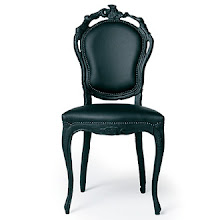Citation: Schifferstein, H. N. J., & Zwartkruis-Pelgrim, E. P. H. (2008). Consumer-product attachment: Measurement and design implications. International Journal of Design, 2(3), 1-13.
1. Due to differences in the attachment consumers experience towards the durable products they own, they hang on to certain products whereas they easily dispose of others. From the viewpoint of sustainability, it may be worthwhile to lengthen the life span of many durable consumer products. Hence, there is a challenge for designers to strengthen the bond between consumers and their products through the product design process. In the present study, we develop a scale to measure consumer-product attachment, and we identify and measure seven possible determinants of attachment: enjoyment, memories to persons, places, and events, support of self-identity, life vision, utility, reliability, and market value. Only memories and enjoyment contribute positively to the degree of attachment. The highest levels of attachment are registered for recently acquired products (<1 year) and for products owned for more than 20 years. For new products, enjoyment may be the main driver of attachment, whereas for old products memories may be more important.
Based on these results, several design strategies are proposed to intensify the emotional bond that users experience with their durable products: design more enjoyable products, develop products that are used together with other people, and design products that gracefully accumulate the signs of their usage history in their appearance.
From the viewpoint of sustainability, high product turnover is in many cases undesirable, because it produces waste and uses up more scarce resources.
One possible strategy to slow down product life cycles is by increasing the attachment people experience towards the products they use and own.
When a person becomes attached to an object, he or she is more likely to handle the object with care, repair it when it breaks down, and postpone its replacement as long as possible.
CONSUMER - PRODUCT ATTACHMENT
We define the consumer-product attachment as the strength of the emotional bond a consumer experiences with a durable product. ...implies the existence of an emotional tie between a person and an object.
IRREPLACEABILITY, INDESPENSABILITY & SELF EXTENSION
2. irreplacebble =symbolic meaning not present in other products.
indispensable = practical not emotional reasoning
self extension= entends self concept, expected / owned
DETERMINANTS OF ATTACHMENT
People form feelings of attachment to objects irrespectie of the primary functions these products perform. WHY?
People use objects to define the self, to create a sense of identity, to remind themselves and others of who they are or who they would like to be and to protect and enhance their self-concept.
3.Diffuse Self - Enjoyment
Private Self - Individual Autonomy
Public Self - Group Affiliation
Collective Self - Life Vision
4. From the viewpoint of sustainability, it is interesting to determine changes in the degree of consumer-product attachment over time, because they will partly be responsible for the moment of product disposal.
8. Implications for designers seeking to increase the sustainability of people's consumption patterns by stimulating the degree of attachment between people and the products they own.
Designers should design products that are useful and evoke enjoyment, or facilitate the formation of associations between products and people, places or events (memories).
9. The recollection of memories may be enhanced if a product shows physical signs of the events. *material choice
Subscribe to:
Post Comments (Atom)

No comments:
Post a Comment